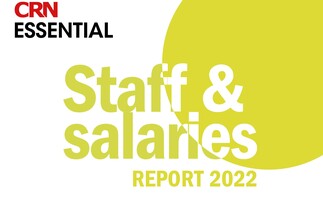CMOs and other business leaders are being hailed as the new power centre of IT decision making. But recent CRN/Computing research suggests that IT directors and managers should remain the focal point for VARs and other technology suppliers, says Doug Woodburn
The IT manager is cutting an increasingly marginal figure in the technology buying cycle, if recent headlines are to be believed.
Cloud applications and services are now a doddle to procure and consume, and line-of-business executives have started to regularly purchase technology on their own, with or without the IT department's consent.
Meanwhile, with technology regarded by many organisations as critical to their very survival in the digital era, IT is now a sphere where the CMO or CEO increasingly wants a say.
Understandably, many VARs and other IT suppliers are rushing to train their sales staff to speak the language of the CMO or business leader to take advantage of these trends.
Looking at the market data out there, it's easy to see why business executives - rather than the CIO or CTO - is seen as the new power centre IT suppliers must influence.
According to Gartner, CMOs will spend more on IT than CIOs this year. Gartner also believes that the central IT department is now leading and implementing IT strategy by itself in only 26 per cent of organisation.
IDC is of a similar mind, predicting that line of business (LoB) executives will control over 45 per cent of global IT spending by 2018.
But while it's certainly true that there is no longer just one IT buying centre in most organisations, IT suppliers will underestimate the power and influence still wielded by the CIO and IT department at their peril.
The IT director's enduring influence
Recent research conducted by CRN and sister publication Computing suggested that, contrary to perceptions in some quarters, IT directors and managers still exercise the greatest influence over decisions.
Non-IT decision makers have become more important in early stages of the procurement cycle but become less so as it progresses, the research found.
In contrast, the IT director/head of IT has the greatest overall involvement throughout the lifecycle of a purchase and remains as important in the final stages as they are at the beginning.
While Line of Business heads exert influence at the start of the process, and financial directors towards the end, IT directors and managers are integral throughout each step.
Put simply, anyone who wants to sell technology needs to have them on board.
Arguably, the IT department has regained some influence in recent times as organisations correct mistakes they have made around shadow IT or entrusting too much responsibility to lines of business.
Indeed, one education CIO interviewed in the CRN/Computing research had experienced just this:
"We've been through a journey where years ago all the departments chose their own systems [and] they [didn't] work together. So now we've gone the other way and IT has control of it and we have to veto any particular procurement choice that they wish to make. Ultimately, you end up with multiple systems that have to plug together and I call that plugging together the glue. But no-one in the organisation owns the glue apart from IT, and so it's IT's responsibility to make sure that the glue holds the different pieces together."
Wise sellers will have lines of communications into the relevant departments as well as IT. CRM suppliers, for instance, should be appealing to sales directors, accounting suppliers to finance teams and marketing automation to marketers, and so on. But all of this should be in addition to IT personnel, who will ultimately be delivering, supporting and integrating it with the existing technology stack.
That's just one of a number of key findings of the research, which looks at how buying and selling enterprise technology in the era of cloud and digital transformation has changed. Click here to request the full report.











